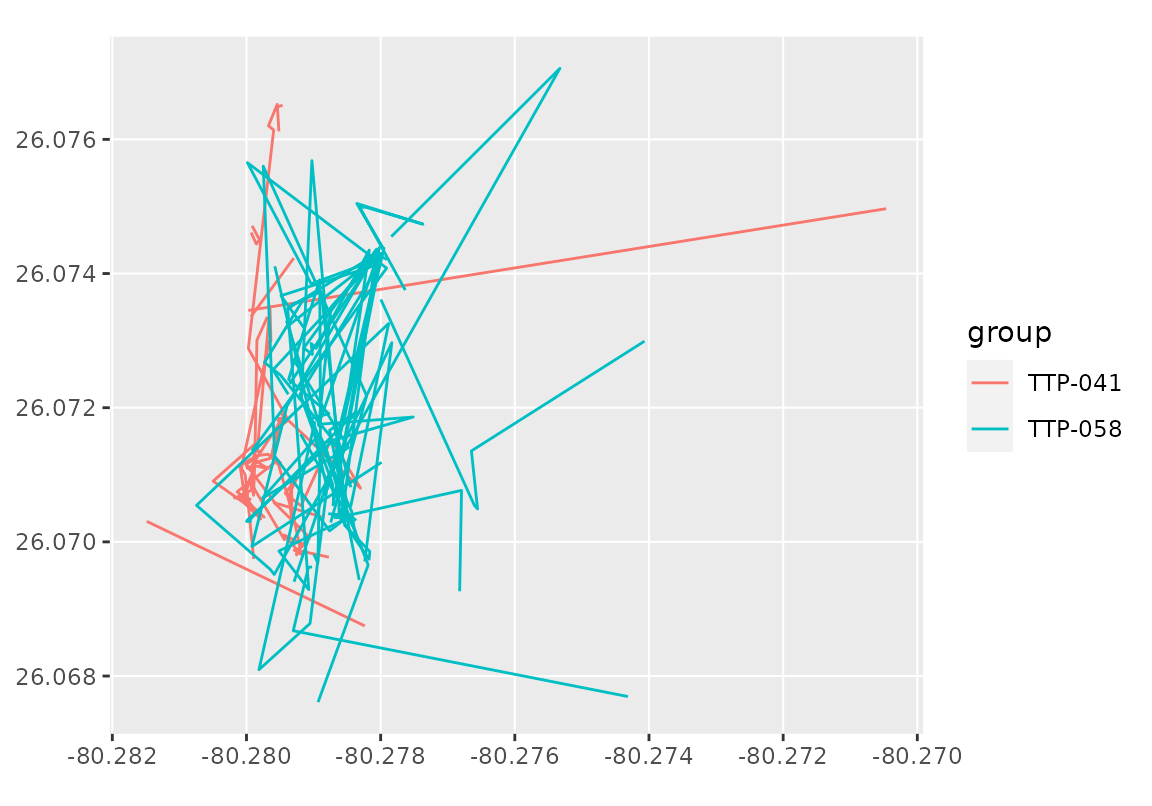This function can be added to ggplot() to plot an sftrack and sftraj Function does not yet work with ggplot grammer so you must but data= in this function
Arguments
- mapping
mapping aesthetics for ggplot.
- data
the sftraj or sftrack object.
- ...
arguments to passed to ggplot
- step_mode
TRUE/FALSE, whether to plot in step_mode, See details
Details
step mode refers to considering the trajectory as individual 'steps', in the case of plot this means it will plot each line & point individually. This approach is much slower to plot when n(steps)>10,000. The alternative method is to merge the steps into a multilinestring of continuous lines. This is much faster to plot.
Examples
#'
require("ggplot2")
#> Loading required package: ggplot2
data("raccoon")
raccoon$timestamp <- as.POSIXct(raccoon$timestamp, "EST")
burstz <- c(id = "animal_id")
# sftraj will as well for the most part, however as its a more complex
# structure to speed up plotting.
my_sftraj <- as_sftraj(raccoon,
time = "timestamp",
coords = c("longitude", "latitude"),
group = burstz
)
ggplot() +
geom_sftrack(data = my_sftraj)
